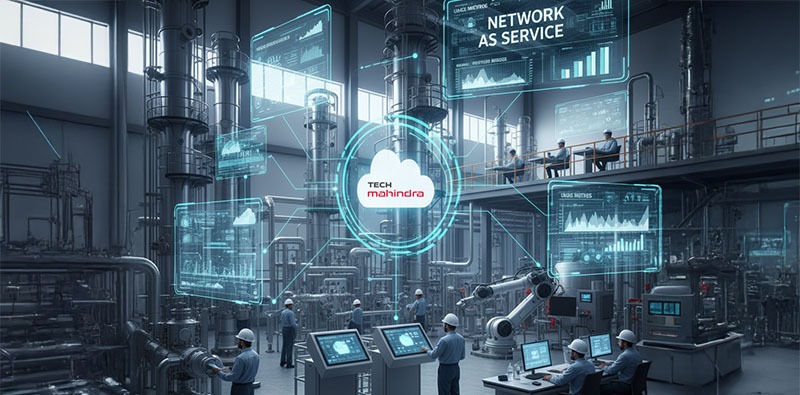Best Practices Articles

New World of B2B Marketing and Selling: Why Sales Should Report to Marketing
You must be saying, “What?” This article title makes no sense, right? Well, let me assure you: you’ve read it right. I firmly believe B2B marketing is taking over B2B selling, and I’ll explain why this makes sense.
The primary research of all the major analyst firms (including Forrester, SiriusDecisions and Gartner) definitively shows (doesn’t just assert) that more and more buyers are relying almost exclusively on online, digital engagement as they go through the buying process. In many cases, buyers proceed through the entire process without ever talking to a seller.
As consumers, all of us can relate to this phenomenon. For the vast majority of buyers, long gone are the days of getting a Sears or Land’s End catalog in the mail and then calling up an 800 number to place an order. In the consumer world, we go through the buying process online nearly 100% of the time. You can actually buy and sell a house that way, not to mention more routine purchases like cars and boats. The entire consumer experience is now online, and marketing runs that world. Sales departments take orders and provide support. So why should it be any different in the B2B space?
In recent history, the B2B marketing and selling environment has been quite divided functionally. The marketing world operated on a half-yearly and annual cycle, while sales operated on a quarterly cycle. Figuring out how to pass qualified leads generated by marketing to sales has always been a challenge. This is no longer the case in the B2C world, however. Why not? Because marketing runs pretty much everything, and B2C sales is all about fulfillment and customer support and care. Sales support and customer care include growing the relationship and educating the customer about potential recommendations and add-ons, but they are no longer primarily about closing the sale.
“But what about B2B sales?” you ask. “The B2B sales process is highly complex. How can you not have sales people interact with the customer?” Well, actually, when you ask B2B buyers this question, most will now say that they prefer doing research on their own until they reach the point where they are absolutely sure who they want to engage with. Larger business organizations sometimes go through a more complicated request for information (RFI) or request for proposal (RFP) process, and in that case the buying process looks quite different, but organizations that are directly evaluating what to buy and do not need an RFI/RFP process can get the information and support they need through marketing alone.
Yes, only marketing – because when B2B marketing is done competently, all of the questions a buyer has can be answered digitally via online assets. These assets might be of an overview of the product via data sheets, reference validation via customer success stories or actual product demos in the form of recorded videos. The irony is that when we think about the traditional buying process steps (awareness, interest, trial, purchase, repurchase), we still tend to believe that marketing generally stops at awareness generation and perhaps some level of interest creation, but in truth every one of these prospect/customer engagement steps can be digitized without the involvement of salespeople.
So, to be successful in today’s fully digitized B2B selling environment, you invest in digital B2B marketing to build trust and educate the buyer. This is where most of your investment will go, and because of that it makes sense that marketing runs the show. Whereas in the past, businesses selling to other businesses invested more robustly in sales and only incrementally in marketing, today and in the future the reverse is — or will be — true. You can bet on it.
Hopefully I’ve got your attention now, and maybe you’re at least willing to consider the notion that B2B marketing should be driving the sales process. It’s not that big a leap to imagine creating entirely digital engagement scenarios for a variety of prospects, ranging from the prospect who is just researching to a set of stakeholders at who are evaluating in detail what potential solutions can do.
It’s not that sales people are absent in these scenarios. Indeed, they are very much present, but their role is much less focused on closing and is more about serving as a solution consultant and pointing prospective buyers to the right marketing and sales assets to truly enhance the buying experience. By the way, in this framework there is much less urgency and stress associated with the buying process, because you no longer have a salesperson constantly pinging the prospect about next steps. Instead, you are guiding the prospect through the entire buying process by making yourself available to answer any questions they may have.
Does the digitization of the buying process mean reductions in the number of salespeople you have? Possibly, but it hardly means the entire sales department will disappear. More likely, some headcount will shift from sales to marketing. In the old days, you may have had 10 people in sales and one or two in B2B marketing, but in today's digital selling environment you might actually flip the balance of that investment.
It’s true that here may be some print, billboard, TV and radio marketing that is still not digital, but it’s very likely that if these kinds of marketing tactics do not go digital and therefore cannot be accurately tracked within the next decade, they simply won't get investment dollars. The old notion that “I know 50% of my marketing works, I just don't know which 50%” is completely off the table. These days, if you don't have solid metrics that can tell you what is working, there’s very little justification for spending on those tactics. There are so many other reliable ways to measure success and ensure a decent return on your investment.
According to Chiefmartec.com, there are about 5,000 marketing and sales automation companies pursuing innovations designed to completely digitize the buying/selling process, and a significant portion of these companies are focused on the B2B marketing environment. This trend is not going away. B2B marketing will drive the direction of your sales process and will be responsible for its success (or failure). Sales people will mostly consult and, at least in some cases, close. I can think of at least five core reasons why this is the case:
- Educating vs. selling – The great thing about this new digital world is that the customer rules. What matters is not what the seller wants to say, but what the buyer is looking for. Of all the options out there, there a few that makes sense to the buyer, who has to find them. Researching and learning is the first step of B2B buying, and this stage is where you can build a relationship with a prospect by showing him/her what is truly relevant. The more intelligent your digital engagement process is, the more relevance you can show. Think about your experience with Amazon’s recommendation engine. If you can show assets and content that is truly within the buyer’s interest zone, you just helped the buyer immensely in the learning process – whether the buyer is a consumer or a business customer.
- Building trust vs. adding stress – When they have narrowed their search to a small set of vendors, the primary questions that B2B buyers have are: “Will this work for me?” “Will it make sense financially?” “Can I trust these guys?” That’s it. While a seller may do a good job in answering the first two questions, organizations often lose sales due to lack of trust. This is why respecting buyers’ preference to do research and figure it out on their own is so important. It may not eliminate the need for a sales person to engage, but that engagement is going to look very different now.
- Getting a second chance – It’s essential to remember that B2B sellers are often clueless about what buyers are thinking. Because 60% to 80% of airtime in the engagement process is typically taken up by the seller explaining core capabilities, very little time is left to understanding what the buyer is really looking for. When your pitch misfires or covers the wrong points, you don’t get a second chance. Digital content can provide that second chance, and it can greatly reduce the air time a seller needs to pitch as opposed to simply answering the buyer’s questions.
- Understanding what matters – When you engage with buyers digitally, you get X-ray vision into what truly matters. It’s not possible to record every sales conversation and decipher what questions truly matter, but you can experiment digitally, track results, see which assets are working and which are not, and understand what you can do to improve. (This is a B2B marketing function, not a sales function.) The more you learn, the more you can fine-tune your efforts for greater relevance and turn up on the buyer’s short list. It also helps if your salespeople are not pushy, and are focused on sharing information to help the buyer make the right decision.
- Take your losses with stride – B2B sales may still measure success in terms of closing the deal, but in today’s digitized buying environment it is also about losing gracefully. Yes, you got that right: Sales is as much about losing with grace and respecting a buyer’s decision as it is about winning when the fit is right. No matter how great your solution is, there will always be cases where a competitor is better positioned and wins. In the old analog world, feedback from sales personnel when they lose is anecdotal. In today’s digital world, however, you can diagnose your pitch, pricing and positioning digitally and actually put together a forensic analysis that explains why you lost it. Add this analysis to your salespeople’s commentary and you will be much closer to the truth than before. In fact, you may discover the loss made sense and was not worth pursuing because it would have distracted you from your core pursuit. This is very important and useful information.
I could keep going on this theme, but I will pause for now. We are entering a brave new world of B2B marketing and selling, where marketing will drive the direction of – and be responsible for the success of – the B2B selling process. Forrester forecasts that close to a million sales job will be lost by 2020, but I would like to put it more positively. It may be possible to create just as many jobs in B2B marketing to create more and better digital content, and to analyze and understand what truly matters to the buyer. In fact, this is already happening. As the trend accelerates, companies will certainly be forced to reconsider how they balance investments between sales and marketing. As their marketing organizations grow, and requirements for traditional and tactical sales engagement change, the sales team will certainly shrink, but many of those resources can be retrained and redeployed for better customer care by learning to be solution sellers.
Perhaps you think I am too optimistic. Well, I am optimistic by nature, but I am also a realist. I have observed this transformation in B2B marketing over the past five years with multiple client accounts. The proportion of our client base going digital and leading with marketing continues to increase, but the truth is that this brave new world is on its way and is creating a better environment for all: marketers, sellers and especially customers.
For more information, please check this article.
Best Practices Guidebook
 Modernizing Channel Marketing: AI and Ecosystem Enablement Best Practices
Modernizing Channel Marketing: AI and Ecosystem Enablement Best PracticesDownload for FREE
 The Channel’s Shift to Partner-Led With AI Best Practices
The Channel’s Shift to Partner-Led With AI Best PracticesDownload for FREE
 Hyperscalers, ISVs, and AI: Shaping the Future of B2B Software Distribution
Hyperscalers, ISVs, and AI: Shaping the Future of B2B Software DistributionDownload for FREE
 Definitive Guide to a Partner Ecosystem-First Sales Strategy
Definitive Guide to a Partner Ecosystem-First Sales StrategyDownload for FREE
 The Partner-Led Digital and AI Transformation Best Practices
The Partner-Led Digital and AI Transformation Best PracticesDownload for FREE
 Startup Talent Recruitment: Hiring Missionaries, Not Mercenaries
Startup Talent Recruitment: Hiring Missionaries, Not MercenariesDownload for FREE
 The Future of Partner Relationship Management with AI in Partnerships
The Future of Partner Relationship Management with AI in PartnershipsDownload for FREE
 Cybersecurity for the 99%: Strategies from the Frontline
Cybersecurity for the 99%: Strategies from the FrontlineDownload for FREE
 Mastering Partner Relationships: A Strategic Approach to Business Growth
Mastering Partner Relationships: A Strategic Approach to Business GrowthDownload for FREE
 Mastering Partner Relationship Management: Keys to SaaS Channel Success
Mastering Partner Relationship Management: Keys to SaaS Channel SuccessDownload for FREE
 Navigating the AI Revolution: Guide for Partners in the Microsoft Ecosystem
Navigating the AI Revolution: Guide for Partners in the Microsoft EcosystemDownload for FREE
 Mastering the Modern Buyers Journey: Sales Leader’s Guide to AI & Engagement
Mastering the Modern Buyers Journey: Sales Leader’s Guide to AI & EngagementDownload for FREE










